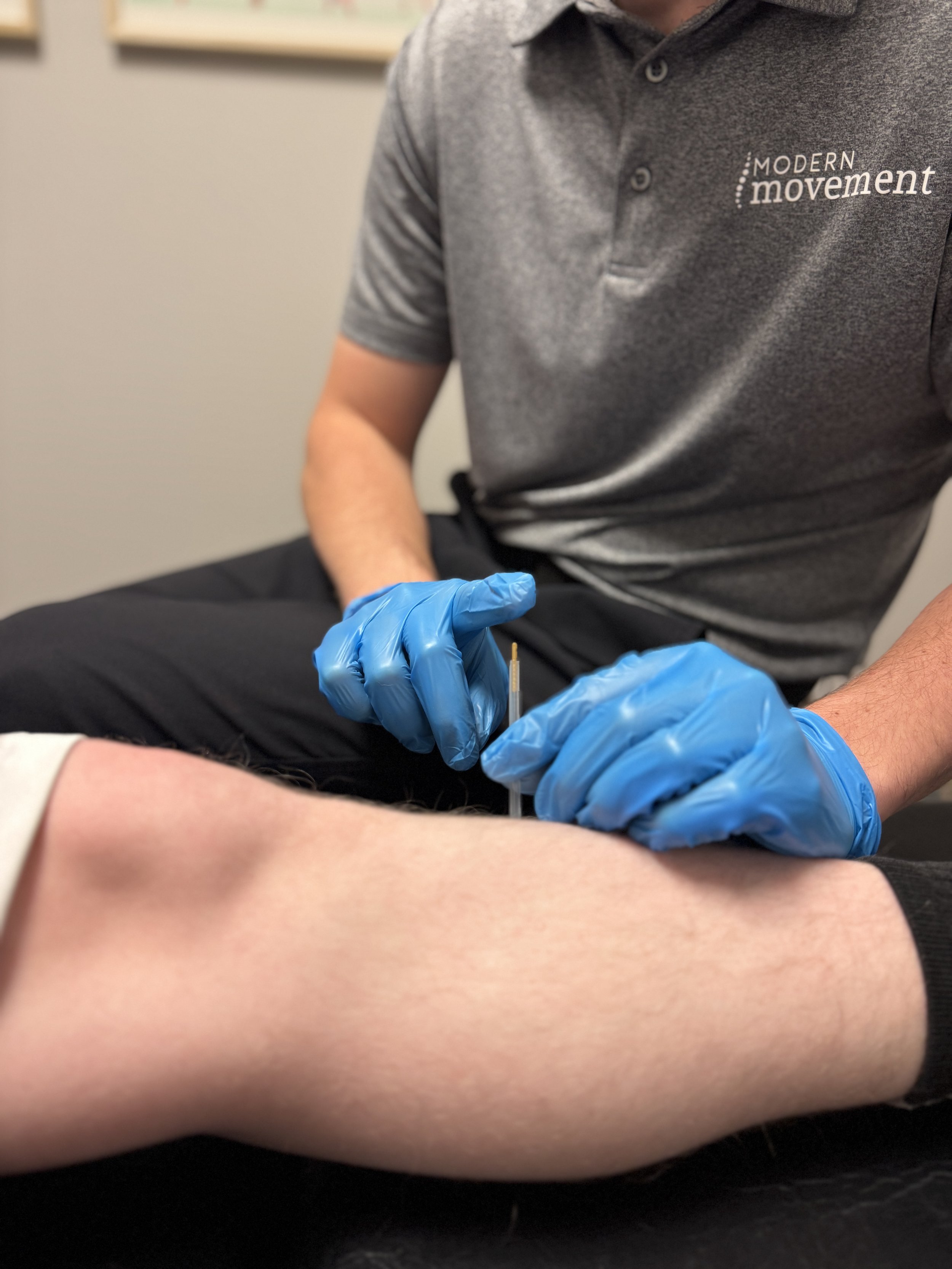Dry Needling
What is Dry Needling?
Dry needling is a treatment that uses a very small diameter needle placed into painful soft tissue such as muscles, tendons, and ligaments. The needle then improves blood flow to the affected area, and improves range of motion and function while decreasing muscle tension, pain, and inflammation.
Frequently Asked Questions
-
Dry needling is not the same as Acupuncture. Acupuncture focuses on traditional eastern medicine of qi energy and meridian lines which were developed thousands of years ago. Dry needling utilizes western medicine scientific principles of anatomy and physiology to explain why changes occur in tissues with dry needling. The needles used in acupuncture and dry needling are the same small, monofilament needles ranging in length from 1/2 to 3 inches long.
-
Dry needling has many benefits, including managing soft tissue inflammation and positively influencing the function of the nervous system!
Some of the benefits you will experience with dry needling treatment:
Improved blood flow
Release of tension in muscles
Relief for acute and chronic pain
Facilitated tissue repair/healing
Decreased inflammation
Improved range of motion
Increase in muscle strength
Improved daily function
-
Conditions include, but are not limited too:
Neck and back pain (disc injuries)
Shoulder, arm, and hand pain (rotator cuff injury, tennis elbow, golfer’s elbow, carpal tunnel)
Headaches, migraines, jaw pain
Buttock pain, leg, and knee pain (sciatica, hamstrings strains, patellar tendinitis, calf tightness/spasms)
Foot pain (plantar fasciitis)
-
Dry needling is an invasive procedure that when performed appropriately should only cause minor short-term discomfort if any, and should not be considered painful.
Needle placement is commonly associated with:
Twitch response: Muscle jumps reflexively.
Deep dull achiness: Typically can dissipate rather quickly, is one sign of a successful treatment.
Burning: This means the needle is close to a nerve fiber. The needle is removed and placed in a different spot.
Tingling: Can indicate you are close to nerve tissue-which is safe and many times is the goal in order to reduce inflammation and ultimately your pain.
Reproduction of your pain: If the needling reproduces your specific pain believe it or not it can be a very good thing! If your clinician knows exactly where the pain is coming from it is easier to treat it!
-
Common Side Effects
Fatigue/drowsiness
Mild bleeding/bruising which disappears in a few days
Short term increase in symptoms
Muscle soreness after needling which dissipates the same day or next day
Sweating
Risks and Rare Side Effects
Syncope (fainting): Symptoms leading to fainting may include sweating, lightheadedness, and dizziness. The needles are removed quickly, patients recover within a few minutes
Pneumothorax (collapsed lung): great caution is taken while dry needling around the lung areas to avoid hitting the lungs. Needle placement and needle size are important!
-
If you are afraid of getting needled, no worries - we understand!
Dry Needling is a powerful tool that we can use to help alleviate your pain and we want to assure you are as comfortable as possible. Before we begin, we will explain the process step by step so that you know exactly what to expect during the treatment.
You should know that dry needling does not have to be painful- we use specific techniques designed to minimize your discomfort.
-
Dry needling is integrated into patients treatment plans as needed.
Dry needling can provide relief as a stand-alone intervention as well. Any patient who prefers dry needling receive it without receiving other services. *An exam is required at the initial visit to determine if dry needling is safe


